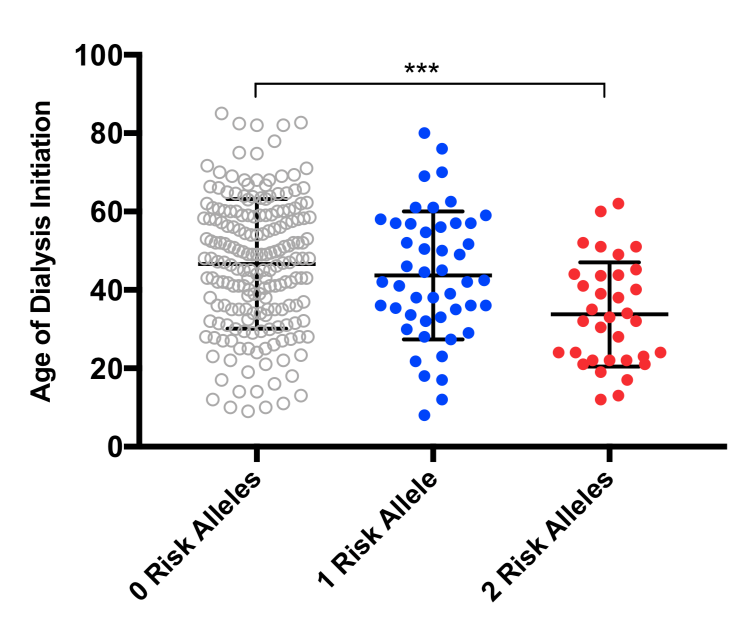Key message:
Although the prevalence of 2-high risk APOL1 alleles is lower in Brazilian of African Ancestry when compared to the USA, the presence of 2-risk alleles was ten times more common in ESRD patients than in controls and led to dialysis initiation 12 years earlier compared to patients with zero risk alleles.
Authors:
Cristian Riella, M.D., Tobias A. Siemens, M.D., Minxian Wang, Ph.D., Rodrigo P. Campos, M.D., Thyago P. Moraes, M.D., Ph.D., Leonardo V. Riella, M.D., Ph.D., David J. Friedman, M.D., Miguel C. Riella, M.D., Ph.D., Martin R. Pollak, M.D.
Kidney International Reports 2019 (ePub)
Abstract
Introduction
Coding variants in apolipoprotein L-1 (APOL1) are associated with an increased risk of end-stage kidney disease (ESRD) in African Americans under a recessive model of inheritance. The effect of the APOL1 risk alleles on kidney disease has been observed in studies in African-American and African populations. Despite the 130 million individuals of recent African ancestry in South America, the impact of APOL1 has not been explored.
Methods
In this case-control study, we tested APOL1 genotype in 106 Brazilian hemodialysis patients with African ancestry and compared risk allele frequency with 106 healthy first-degree relatives. The association of risk alleles and ESRD was calculated with a linear mixed model and was adjusted for relatedness and additional confounders. In a broader survey, the age of dialysis initiation and APOL1 variants were analyzed in 274 hemodialysis patients.
Results
Two APOL1 risk alleles was ten times more common in ESRD patients than in controls (9.4% versus 0.9%; odds ratio=10.95, standard error=1.49, p-value=0.0017). Carriers of two risk alleles initiated dialysis twelve years earlier than patients with zero risk alleles.
Conclusion
The APOL1 risk variants were less frequent in dialysis patients of African ancestry in Brazil than in the United States. Nonetheless, carriers of two risk variants had 10-fold higher odds of ESRD. Age of dialysis initiation was markedly lower in two-risk allele carriers, suggesting a more aggressive disease phenotype. The Brazilian population represents an opportunity to identify different sets of genetic modifiers or environmental triggers that might be present in more extensively-studied populations.
Figure 1
Age of dialysis initiation by number of APOL1 risk alleles. ***p<0.001

